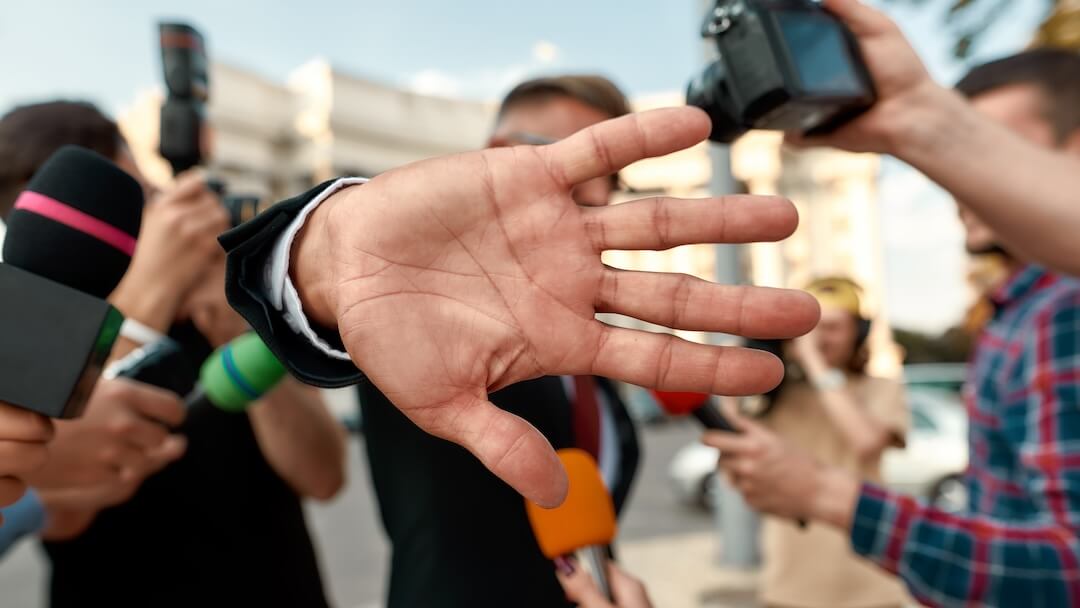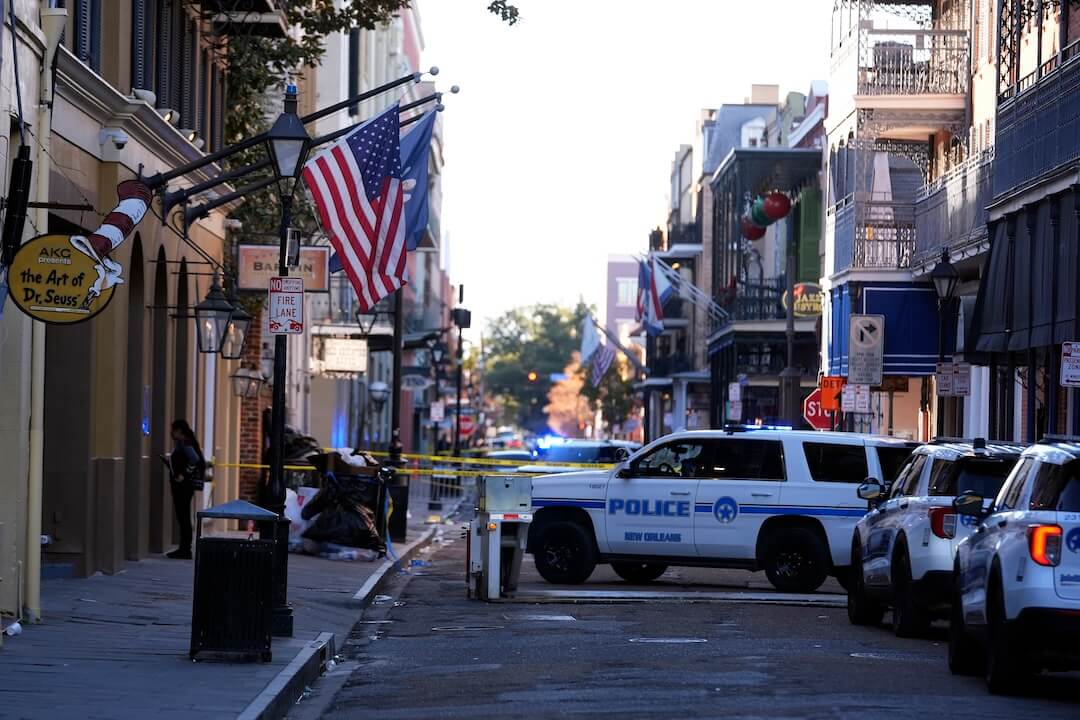One year ago, on Oct. 7, 2023, Hamas militants attacked Israel, killing 1,200 people and taking 250 hostages. The attack triggered the Israel-Hamas war that has killed tens of thousands of Palestinians in Gaza, and a year of misinformation.
Images and videos that have been altered or taken out of context flooded social media platforms, distorting reality. Some social media users tried to downplay the casualties, claiming “crisis actors” were being employed. Other posts mischaracterized the U.S.’ involvement in the conflict.
Experts said in times of crisis, especially at the onset, there is often an information vacuum that misinformation fills.
“Everybody wants to know the truth, but there’s limited information that’s out there, and that creates an opportunity for others to exploit this,” said Todd Helmus, a senior behavioral scientist specializing in disinformation and violent extremism at Rand Corp., a nonpartisan think tank.
This war’s highly polarized nature has also fanned the flames of misinformation, Helmus said.
“People feel strongly about this, and whenever people feel strongly about something, they are very eager to find information that validates their views,” Helmus said. “So, it’s not surprising that in the immediate aftermath, you would see a lot of false information, a lot of out-of-context information.”
PolitiFact has fact-checked numerous claims about Israel, Gaza and the war in the Middle East. Here’s how the misleading and false narratives have evolved over the past year.
Early on, altered and out-of-context photos and videos flooded the internet
Soon after the attack, misleading photos and videos spread widely online, twisting the facts around the conflict.
Several videos that predated the war, including footage of airstrikes and missile attacks, were taken out of context and shared as if they portrayed recent events. Other social media posts tried to pass off video game footage as real life depictions of fighting.
Some videos were altered to make false claims, including that CNN staged an attack near the Israel-Gaza border and the Las Vegas Sphere displayed the Israeli flag.
Valerie Wirtschafter, a foreign policy fellow at the Brookings Institution, a think tank, said a lack of credible information leads people to seek out “any content they can find,” and often they “stumble across rumors or misleading or downright made-up content.”
“Sometimes that early content can be shared unintentionally, but on certain online platforms clicks and views can equate to financial benefit and so there is an incentive to fill the void with false but sensationalist content, especially early on,” Wirtschafter said.
Claims of ‘crisis actors’ downplayed war casualties
At the war’s start, we also saw claims on social media and from a conservative broadcaster, saying images of Gaza casualties and injuries were faked by crisis actors. Some posts claimed to show crisis actors with budgets for different costumes and makeup artists that created realistic injuries.
For example, an October 2023 Instagram video claimed to show Palestinian crisis actors “working overtime to fool the world” during the Israel-Hamas war. But that footage was from a film project that predated the war.
In November 2023, Rob Schmitt, a Newsmax broadcaster, cast doubt on a clip of Palestinian social media influencer Saleh Aljafarawi shared on an MSNBC segment. Schmitt said Aljafarawi was a crisis actor who had “fake blood in his hands.” Images Schmitt shared also claimed to show Aljafarawi as a “freedom fighter,” “blood donor” and in other roles. However, several photos aren’t of Aljafarawi or were taken out of context from his social media accounts.
A viral video also claimed that the violence in Israel and Gaza was “fake.” The video said, “A dead boy suddenly comes alive hearing an air raid siren.” But the video was not recent; it had circulated online since at least 2020.
Israel wrongly blamed for the Baltimore bridge collapse and other catastrophes
During the war, other catastrophes have unfolded, and some misinformers misleadingly linked Israel to those incidents.
The Francis Scott Key Bridge in Baltimore collapsed March 26, 2024, after a container ship struck a support column. Soon after, X posts claimed the collapse had been orchestrated by Israel. However, federal and Maryland state officials said the incident was neither intentional nor linked to terrorism. A Wikipedia entry that supposedly showed proof of Israel’s involvement didn’t link Israel to the incident as the posts claimed. Anyone can edit Wikipedia pages, so an edited page does not prove that Israel caused the collapse.
Other claims related to events that predated the Israel-Hamas war also surfaced online. In November 2023, an Instagram post claimed that “Jews” were responsible for 9/11. This is a longtime and unfounded claim; Al-Qaida terrorists were responsible for the Sept. 11, 2001, attacks, not “Jews” or Israel.
Campus protests become fodder for false claims
Pro-Palestinian protests started on university campuses in late 2023 and continued through May 2024, with student protestors calling for divestment from Israel. The protests spurred false claims about the American flag being replaced by the Palestinian flag at Harvard University and Jewish students being blocked from entering Columbia University.
We also fact-checked claims that billionaire George Soros paid campus protesters by providing grants to organizations linked to the protests. But his grant-making organization, Open Society Foundation, and specific campus protesters had several degrees of separation.
The claim that “outside agitators” were behind the campus protests gained traction in April.
Police, city and university officials nationwide blamed “outside agitators” for campus protests but provided little evidence for their claims. Law enforcement experts told PolitiFact that police often consider “outside agitators” to be people who move from city to city and are paid to be agitators. Historians say government and law officials commonly use the “outside agitator” narrative to delegitimize protesters and their demands.
Misleading claims about U.S. funding to Israel
One misinformation trend focused on U.S. involvement in the Israel-Hamas war. Hours after news of the Hamas attack on Israel, former President Donald Trump released a statement criticizing the Biden administration and falsely claiming that “American taxpayer dollars helped fund these attacks.”
Trump appeared to be referring to $6 billion in Iranian money that was unfrozen as part of a hostage deal the Biden administration had struck with Iran. But no U.S. taxpayer dollars were included in that $6 billion.
Some social media users also mischaracterized the amount of aid the Biden administration has approved for Israel and Palestinian people in Gaza and the West Bank. From October 2023 to May 2024, Congress approved at least $12.5 billion in military aid to Israel, the Council on Foreign Relations reported. And as of Sept. 30, the U.S. had announced $1 billion in humanitarian aid for Palestinians in Gaza and the West Bank over the last year, the U.S. Agency for International Development said.
In May, months into the Israel-Hamas war, Trump made a different claim about U.S. involvement, saying, “Biden wants to immediately stop all aid to Israel.”
That’s False. Biden said during a May CNN interview that he would not supply certain weapons if Israel launched a full-scale assault on Rafah, a city in southern Gaza. Biden did not say he was cutting Israel off from all U.S. aid.
The conflict, and misinformation, spreads to Lebanon
In recent weeks, the conflict has expanded to Lebanon, and with it, the misinformation.
Thousands of pagers and walkie-talkies the Lebanese militant group Hezbollah was using exploded in Lebanon, killing dozens of people and injuring thousands more. U.S. officials said Israel was behind the attacks.
Following these attacks, social media users falsely claimed that iPhones were also exploding in Lebanon. But a viral photo of a broken iPhone circulating online predates the war, and there are no credible reports that iPhones were targeted devices.
On Sept. 28, Hezbollah confirmed that its leader was killed in an Israeli airstrike in Lebanon. A viral video compilation falsely claimed to show this deadly airstrike, but the footage didn’t match up with known details about the attack.
This fact check was originally published by PolitiFact, which is part of the Poynter Institute. See the sources for this fact check here.








